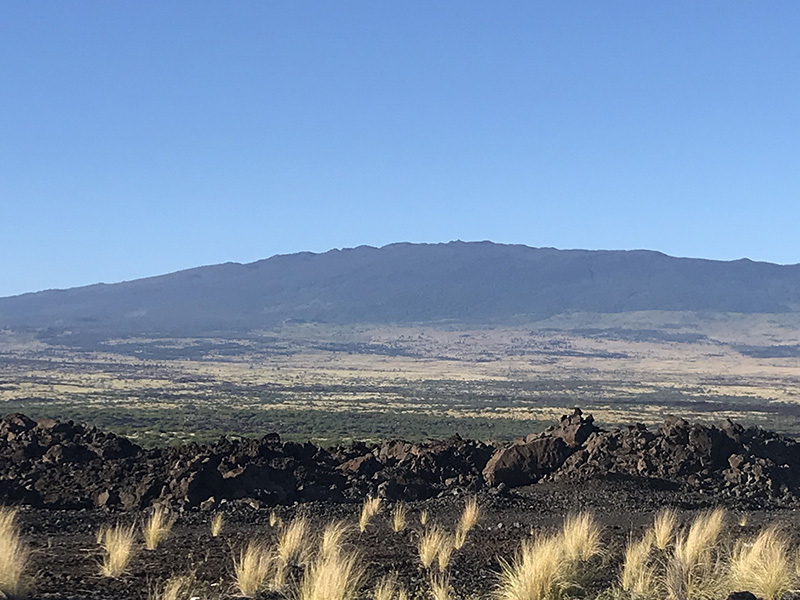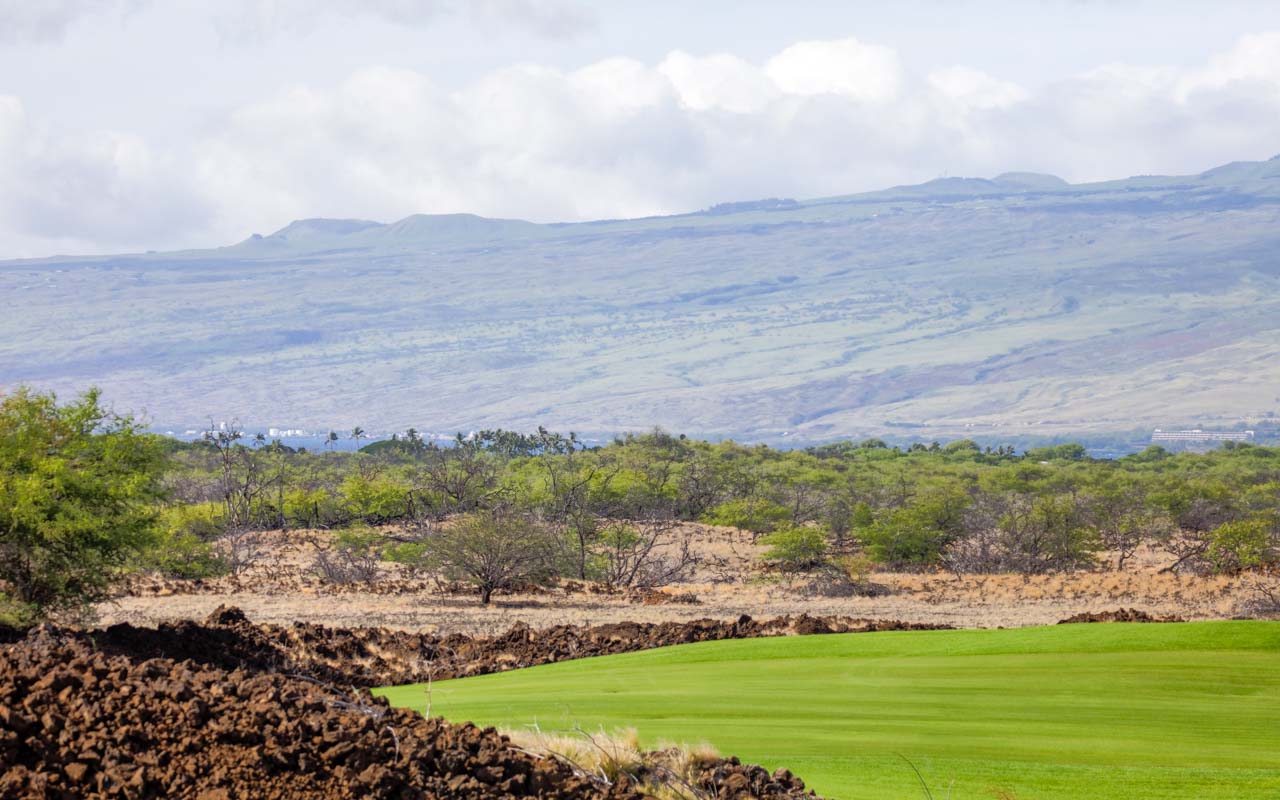A DYNAMIC LANDSCAPE BUILT
BY THE VOLCANOES
THAT FORM THE ISLAND
The different mountains you can see on the Island are actually the five volcanoes that have shaped, and continue to shape, the Big Island.
Kohala
This is the oldest and Northernmost of the five volcanoes that make up the Big Island. It is estimated to be 1,000,000 years old, and considered to be extinct. This shield volcano is cut by multiple deep gorges that have been produced by thousands of years of erosion. Between 250,000 and 300,000 years ago a landslide destroyed the Northeast flank of the volcano and reduced its height by over 3,300 feet. This landslide may have contributed to the foot-like shape of the mountain, which differs from the symmetrical shape of all the other volcanoes on the Island.
Mauna Kea
Mauna Kea is the world’s tallest mountain measured from sea floor base to its highest peak. This volcano is considered dormant and is nearly 1,000,000 years old. When driving through Saddle Road it is the mountain that makes up the Northern side of the “saddle”. The high elevation, dry environment and stable airflow makes Mauna Kea’s summit one of the best sites in the world for astronomical observation. You can visit the Mauna Kea Visitor Information Stations on the slopes of Mauna Kea to view planets and stars through telescopes and learn about the night sky from interpretive guides and rangers. For the darkest skies and best viewing, go up on a clear night within a few days of the New Moon. Information about conditions and operations schedule can be found on the station’s webpage.
Hualālai
This active volcano is the Westernmost, third-youngest and third-most active of the Big Island volcanos. It is estimated to have risen above sea level about 300,000 years ago. Despite its relatively low level of activity over the last 2,000 years this volcano is still considered active and is expected to erupt again some time within the next century. Much of the Kona coffee crops are grown on this mountains’ Western slope.
Mauna Loa
The largest mountain on the Island in mass and volume, this central volcano is considered active. It is estimated to have emerged above sea level 400,000 years ago. The magma that flows from the volcano comes from the Hawaii hotspot, which is responsible for the creation of the Hawaiian island chain. As the Pacific Tectonic Plate carries Mauna Loa away between the next 500,000 to 1,000,000 years it will leave the hotspot and become extinct. Mauna Loa’s most recent eruption occurred in 1984. The Hawaiian Volcano Observatory has been monitoring this volcano since 1912, and the summit and Southeastern flank of the mountain is in Hawaii Volcanoes National Park.
Kīlauea
Located along the Southeastern shore of the Island, this is the most active of the five volcanoes. It emerged above sea level about 100,000 years ago. Kīlauea erupted continuously from 1983 to 2018! The most recent notable eruptions occurred in May 2018, but as of early August the eruptions subsided substantially with the last active lava reported on September 4th, 2018. After 90 days of inactivity the eruption that befan in 1983 was declared to have ended on Dec 5, 2018. It was confirmed on August 1st, 2019 that there is a growing lake of water inside Halema’uma’u crater due to the rising water table known to exist within Kīlauea. Water in the form of a lake has never been visible at the summit before in modern history!






